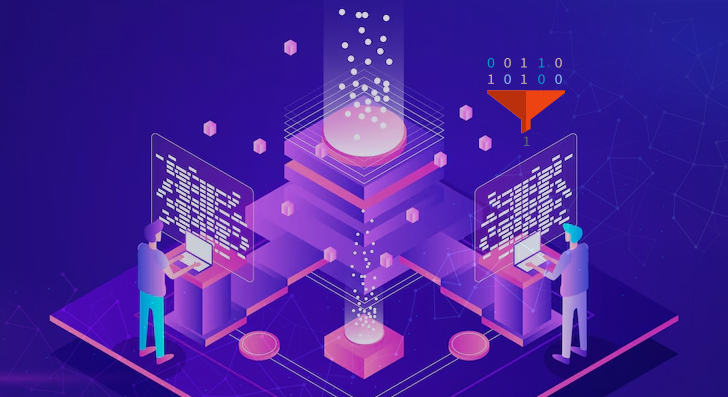
In machine learning, the choice of learning method can significantly influence Batch learning and online models’ performance, efficiency, and adaptability. Two fundamental approaches to training models are batch learning and online learning, each with advantages and challenges. Understanding these methods’ nuances is beneficial and crucial for data scientists, especially those aiming to fine-tune their models for specific use cases.
This article compares batch and online learning, exploring which method is better suited for different machine-learning scenarios. Mastering these concepts is essential and an important stepping stone to success in the field of data science, whether you’re an aspiring data scientist or already enrolled in a data scientist course or a data science course in Mumbai.
Understanding Batch Learning
Batch learning is a conventional approach in which the model is trained concurrently on the full dataset. This approach processes all the data together, and the model is updated after seeing the dataset as a whole. Once the training is complete, the model is deployed for use, and no further updates occur until the model is retrained on new data.
Advantages of Batch Learning:
- Comprehensive Learning: Since the model is trained on the entire dataset, it can learn from all available information, leading to potentially more accurate predictions.
- Consistency: Training on a complete dataset ensures that the model’s learning process is consistent and stable, reducing the likelihood of erratic behaviour due to fluctuating data patterns.
- Optimisation: Batch learning allows for a thorough optimisation process, as the model can adjust its parameters based on the entire dataset, leading to better overall performance.
Disadvantages of Batch Learning:
- Resource Demands: Batch learning requires significant computational resources, including processing power and memory, to handle large datasets in one go. That can be a limitation for organisations with restricted resources.
- Inflexibility: Once the model is trained, it can only incorporate new data if it is retrained on the updated dataset. This lack of flexibility might be problematic when data is constantly developing.
- Time-consuming: Training a model on a large dataset can be time-consuming, which may delay deployment, especially when dealing with massive datasets.
Exploring Online Learning
Online learning, or incremental learning, takes a different approach by updating the model incrementally as new data arrives. Instead of waiting to accumulate a large dataset, the model learns from data points as they become available, continuously refining its predictions in real-time.
Advantages of Online Learning:
- Adaptability: Online learning excels in environments where data is constantly changing. The model can quickly adapt to new trends and patterns, ideal for dynamic scenarios such as stock market predictions or real-time recommendation systems.
- Resource Efficiency: Since online learning processes data incrementally, it requires less memory and computational power than batch learning. That makes it a more efficient choice for real-time applications or systems with limited resources.
- Timeliness: Online learning enables real-time models to update, providing immediate feedback and predictions based on the latest data. This timeliness is crucial in applications where rapid decision-making is essential.
Disadvantages of Online Learning:
- Risk of Overfitting: Because online learning continuously updates the model with new data, there is a risk that the model may overfit to recent trends or noise in the data, leading to less generalisable predictions.
- Complexity: Managing the learning rate and ensuring that the model stays within the optimal solution can be challenging in online learning. Careful tuning is required to maintain model stability.
- Dependence on Data Quality: Online learning heavily relies on the quality of the incoming data. If the new data is biased or contains errors, it can adversely affect the model’s performance.
Critical Comparisons: Batch Learning vs. Online Learning
1. Training Process
Batch Learning: The model is trained in one go, using the entire dataset. This approach ensures the model has access to all the information simultaneously, allowing it to optimise its parameters comprehensively. However, the training process can be resource-intensive and slow, particularly with large datasets.
Online Learning: The model is updated incrementally as new data arrives. That allows the model to adapt continuously, making it more responsive to new information. The trade-off is that the model may only sometimes have the complete picture, potentially leading to less stable predictions.
2. Adaptability to Changing Data
Batch Learning: Once trained, the model remains static until it is retrained on new data. That can be a disadvantage in fast-changing environments, where the model may quickly become outdated. Retraining requires access to the entire dataset and can be time-consuming.
Online Learning: The model’s incremental learning ability makes it adaptable to new data. It can quickly incorporate new patterns and trends, making it ideal for applications where data changes frequently. However, this adaptability can also lead to instability if the data stream is volatile.
3. Computational and Memory Requirements
Batch Learning: This method demands substantial computational power and memory, as the entire dataset must be processed simultaneously. For small enterprises with limited resources, this may be a big obstacle. The need for high-performance computing environments may also increase costs.
Online Learning: Online learning is more resource-efficient, as it processes data in smaller increments. That reduces the need for extensive computational resources and allows the model to run on less powerful hardware. However, maintaining model performance over time requires careful monitoring and tuning.
4. Use Cases and Applications
Batch Learning is best suited for scenarios where the dataset is relatively stable; the goal is to achieve high accuracy through comprehensive training. Examples include fraud detection, where large volumes of historical data are analysed to predict fraudulent transactions, or in scenarios where model updates are infrequent.
Online learning is appropriate for real-time applications in which data is constantly created and must be analysed promptly. Everyday use cases include online recommendation systems, financial market analysis, and adaptive user interfaces that respond to user behaviour in real time.
5. Stability and Predictive Power
Batch Learning: One of the critical strengths of batch learning models is their stability. Since the model is trained on the entire dataset, it produces consistent and reliable predictions. That makes batch learning the preferred method for applications where prediction accuracy is critical.
Online Learning: While online learning offers adaptability, it may come at the cost of stability. The continuous updating process can lead to fluctuations in the model’s predictions, especially if the incoming data is noisy or inconsistent. Careful management of the learning process is essential to maintain predictive power.
Conclusion: Choosing the Right Approach for Your Machine Learning Needs
Ultimately, both batch and online learning have unique strengths and limitations. Understanding these distinctions allows data scientists to choose which strategy to utilise, ensuring their models efficiently and successfully tackle complicated issues. Whether your focus is on stability or adaptability, mastering these learning techniques is essential for success in the ever-evolving field of machine learning.
For those interested in mastering these techniques, enrolling in a data scientist course can provide the foundational knowledge and practical experience needed to apply batch and online learning effectively. A data science course in Mumbai offers the added benefit of learning in a city hub for technology and innovation, providing opportunities to work on cutting-edge projects and network with industry professionals.
Business Name: ExcelR- Data Science, Data Analytics, Business Analyst Course Training Mumbai
Address: Unit no. 302, 03rd Floor, Ashok Premises, Old Nagardas Rd, Nicolas Wadi Rd, Mogra Village, Gundavali Gaothan, Andheri E, Mumbai, Maharashtra 400069, Phone: 09108238354, Email: enquiry@excelr.com.



